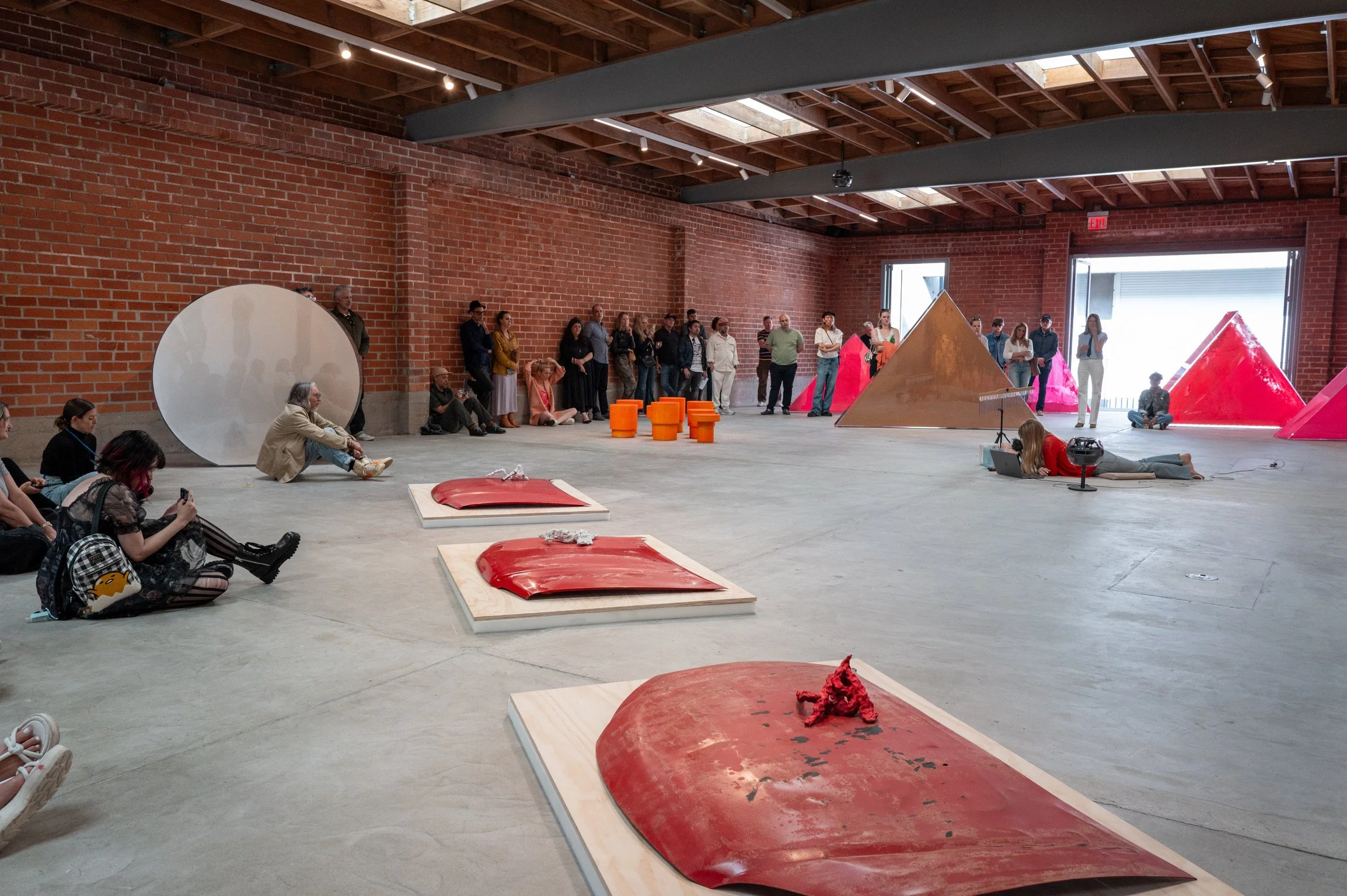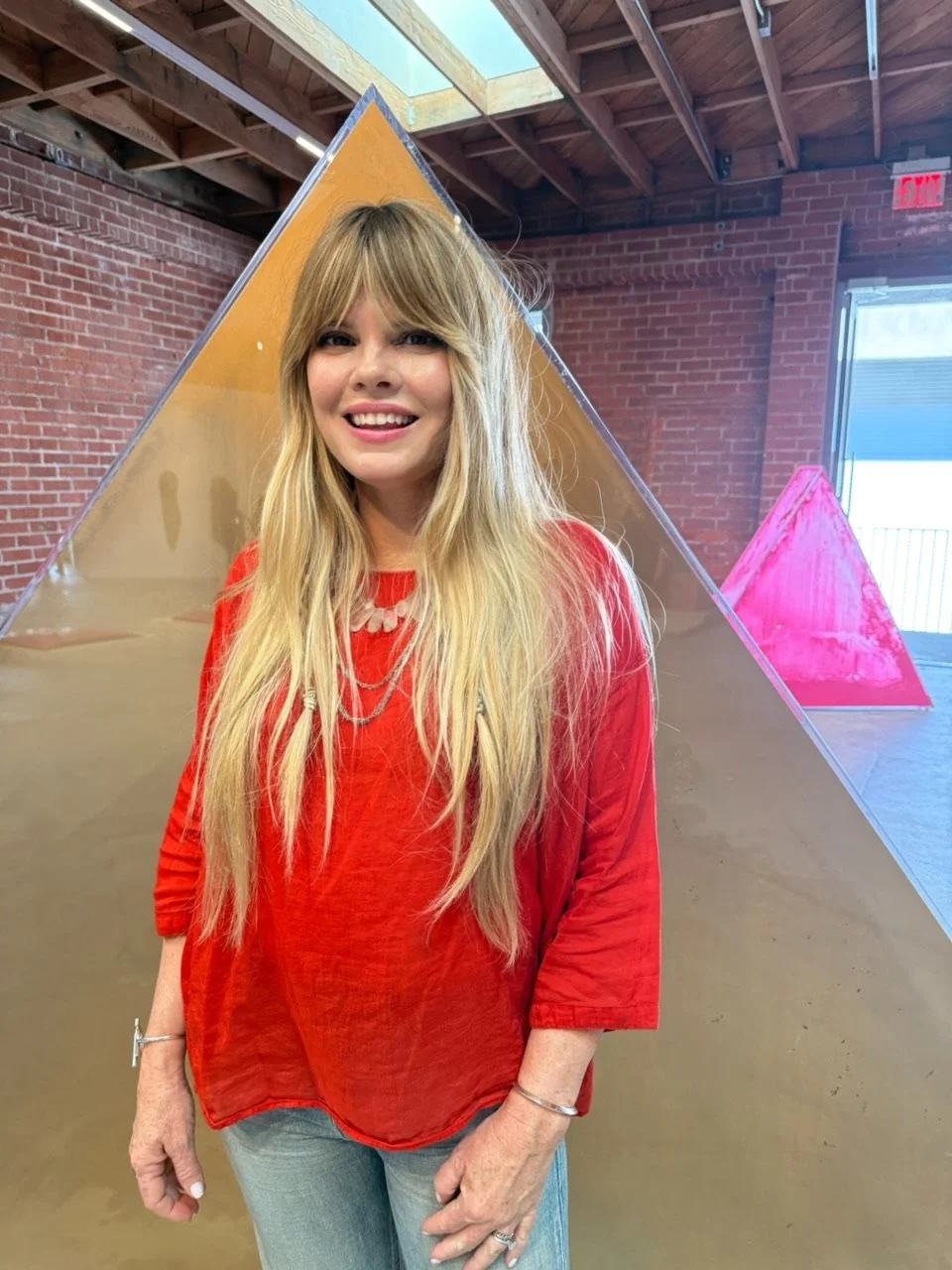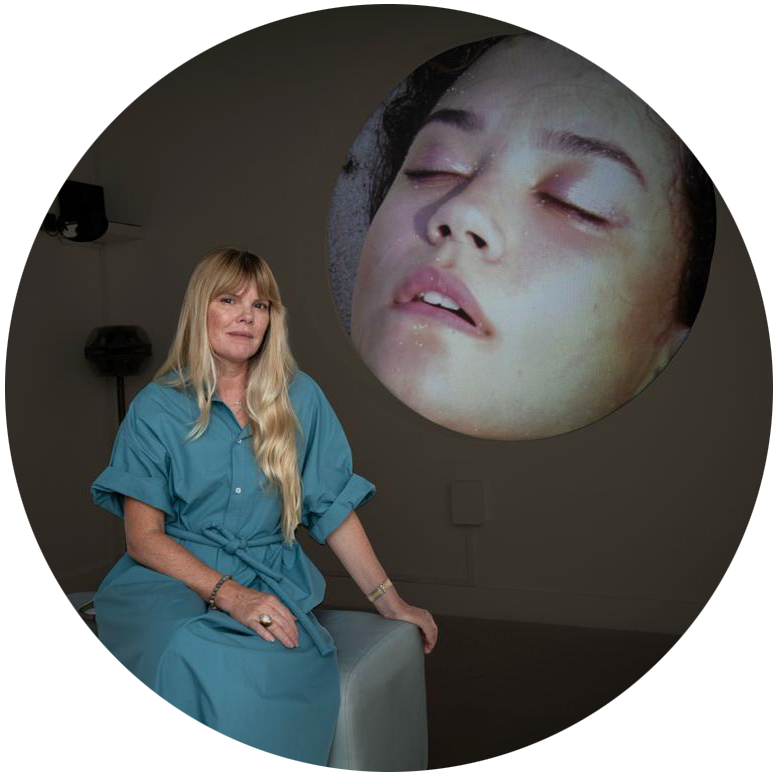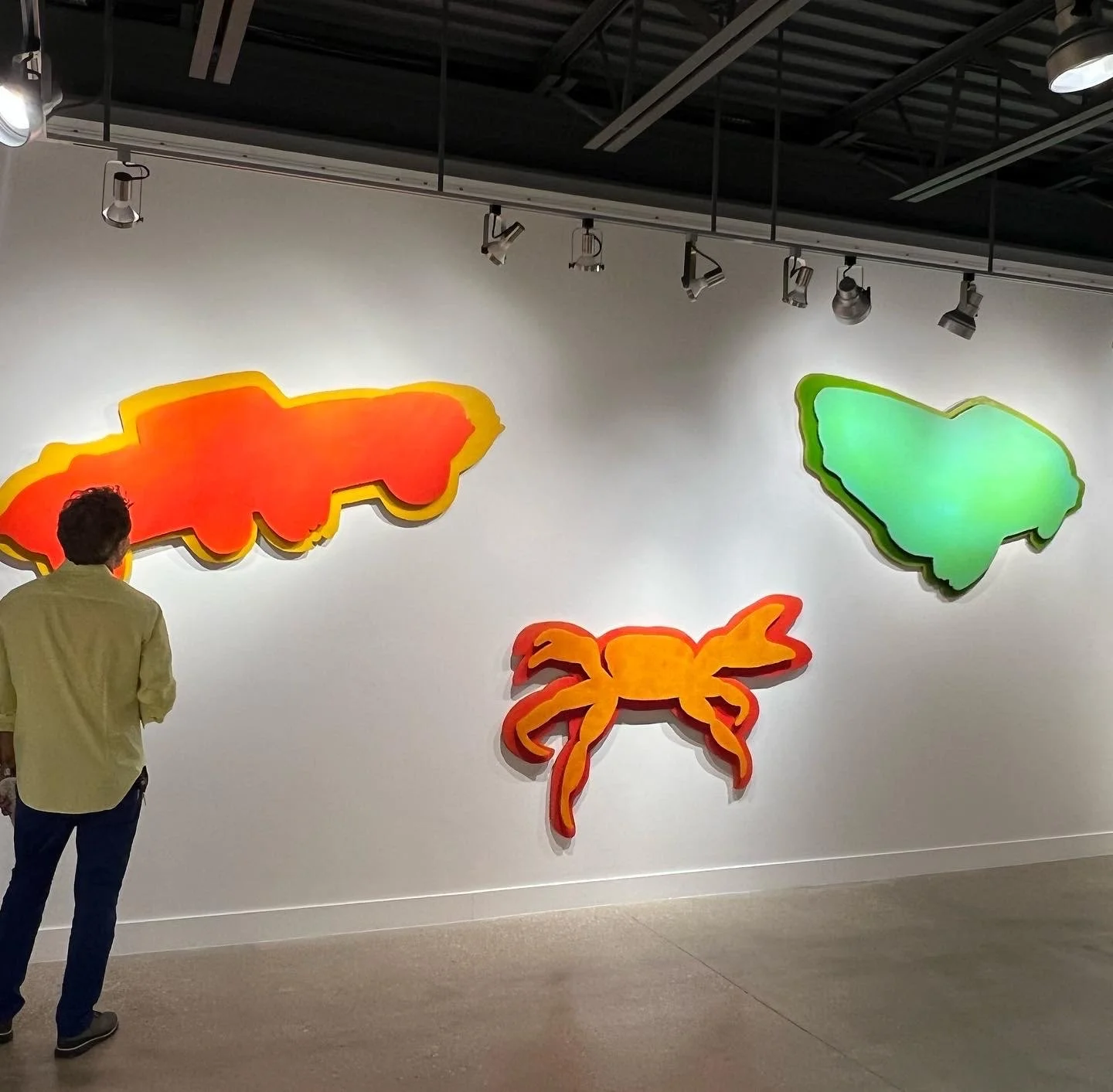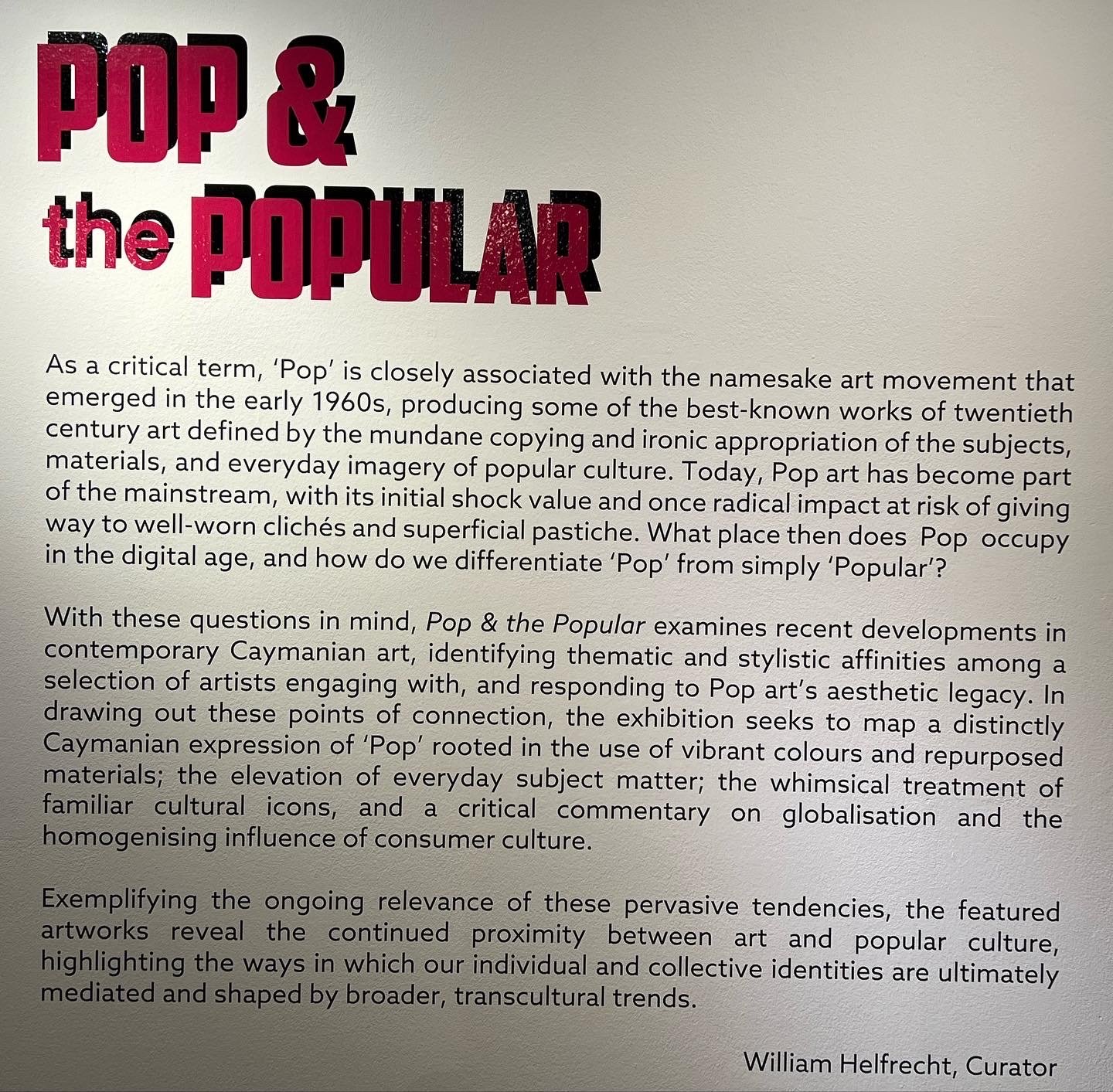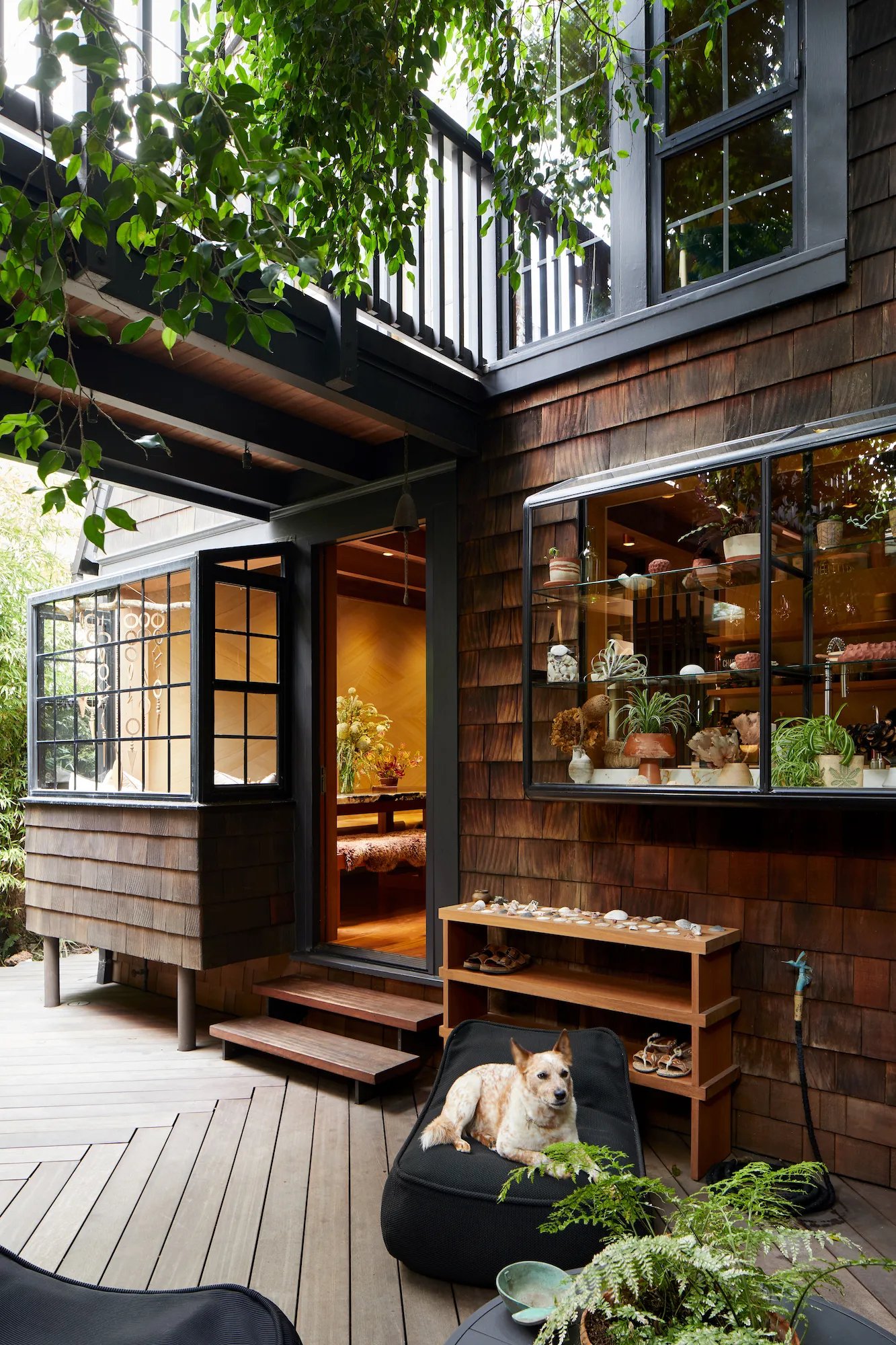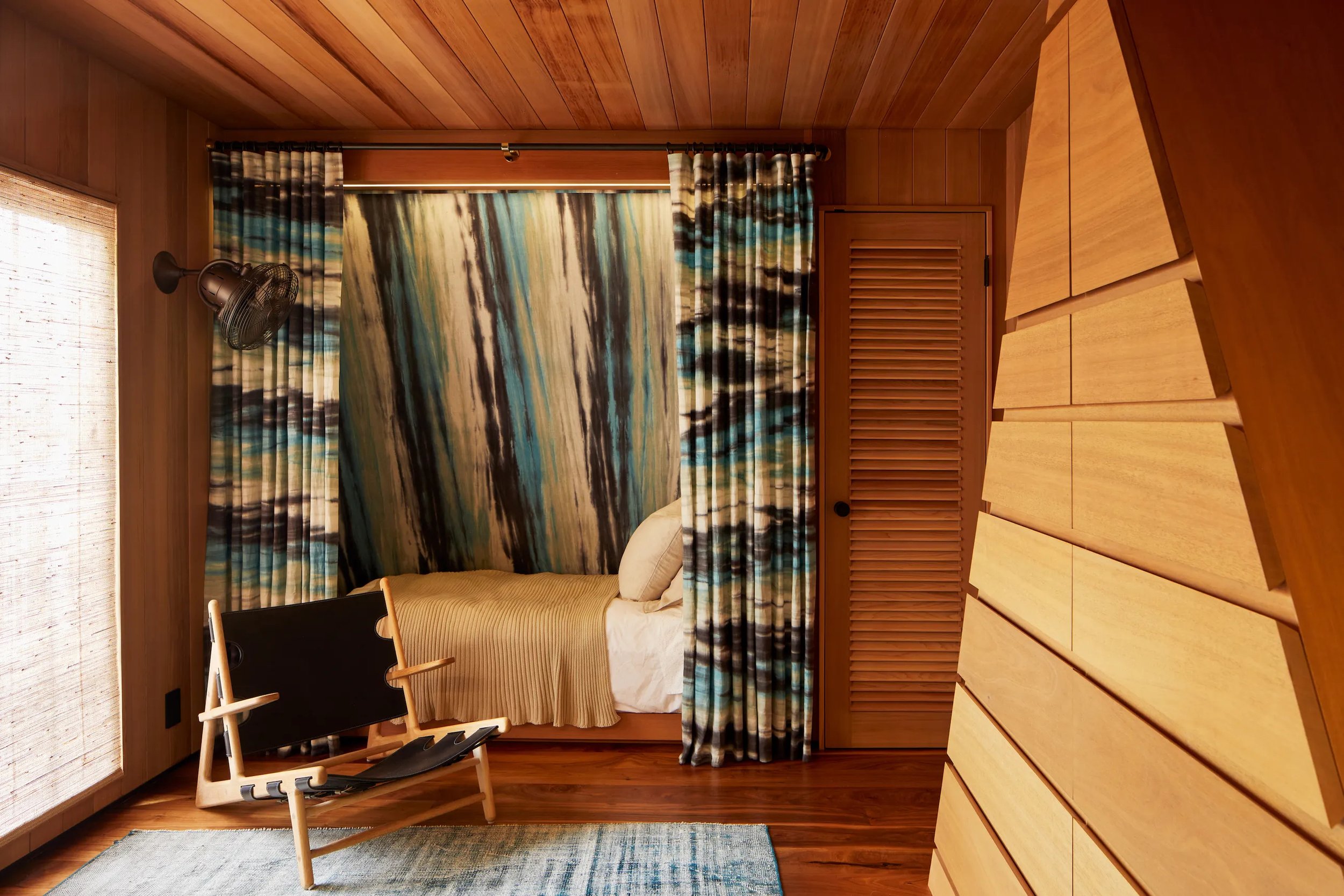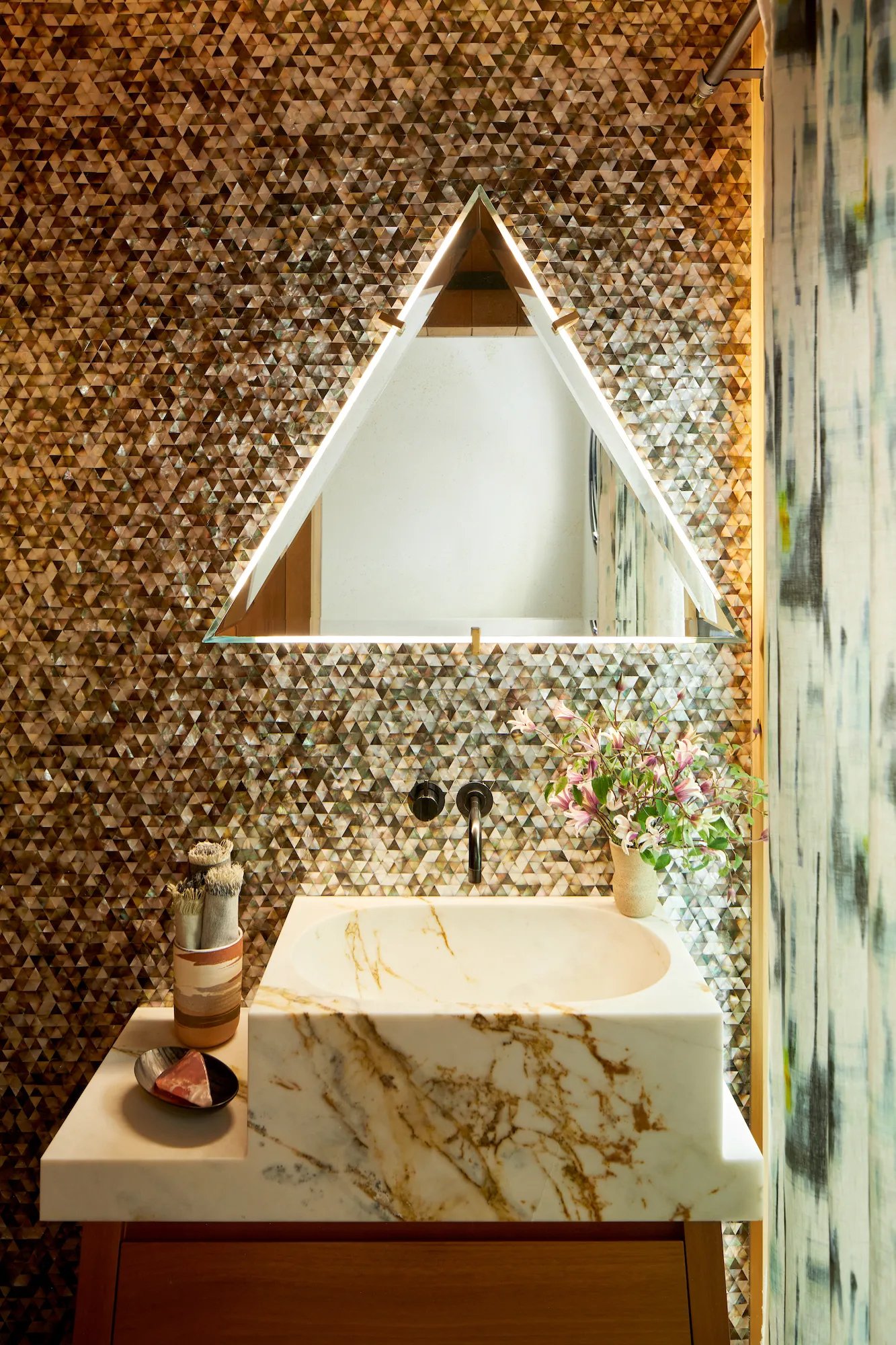unshade me of you | Opening Night - THE BRICK
Elizabeth Paige Smith exhibits her newest work at the THE BRICK from April 13th to May 24th, 2025.
The opening was April 13th, 2-5pm. At 4pm, Smith performed alongside her sound piece, “unshade me of you”, a 22 minute multichannel composition utilizing instrumentals, voice, and field recordings.
Stay Connected
unshade me of you - THE BRICK
Elizabeth Paige Smith is having a solo show at THE BRICK, opening April 13th, 2025, 2-5pm. Live performance at 4pm.
THE BRICK
518 N Western Avenue Los Angeles, CA 90004
Elizabeth Paige Smith
unshade me of you
April 13 - May 24 2025
The Brick is pleased to present unshade me of you, a selection of work by Venice, California-based artist Elizabeth “Betsy” Paige Smith. Between art and furniture design, Smith has a very fluid practice. If anything, these distinct disciplines are subsumed by an approach to materials—resins, pigment, stone, clay, wood, molded plexiglass—that is unflinchingly direct. And while she is comfortable being referred to as artist and/or furniture designer, more often than not she describes what she does as simply “making things.” These things cover a spectrum, from tables and chairs to objects that for lack of function, save being looked at, we designate sculpture. While the work in this exhibition–dating from 2017 to the present–touches on the range of what she does, it more importantly captures the spirit of a restless and resolute materialist.
Smith has made things for as long as she can remember, though she credits her decision to become an artist to her family lineage, which includes her grandmother, the painter Beth Nablo, who was the first woman artist whose work was inducted into the collection of the Albright Knox museum in Buffalo, NY. Born in Houston, at age eight, she and her family moved to the Cayman Islands where, as she describes, “everything was unfamiliar.” Yet, this new home offered her already active imagination new things around which to coalesce. She took solace in the beach where submergence in the ocean waters mirrored her sense of isolation. The toys her mother gave away when they left Houston were replaced by all manner of beach-combed flotsam and jetsam. Based largely on what was at hand, Smith’s childhood play then took on additional layers of creativity and improvisation.
Smith found herself transplanted to a radically different place yet again when she left Cayman to attend a Catholic boarding high school in Atchison, Kansas. Feeling isolated, she instinctively turned to art, which became her “comfort zone.” School authorities made an exception specifically for her, allowing her to take art all four years of her attendance. Upon graduating, Smith went to the University of Kansas, Lawrence with friends to avoid being uprooted once again. She enrolled in a five-year program at the school of fine art, from 1988 to1993. It was interdisciplinary, requiring that its students take courses in the applied and fine arts. Alongside painting and drawing, Smith took courses in interior design, industrial design, and architecture. Notable faculty with whom she worked included the designer Viktor Papanek. For her thesis project, Smith proposed an interior design schema for a hotel/casino. She undertook research at The Mirage in Las Vegas where she was taken under the wing of its senior interior designer who set her up with job connections in Los Angeles after she graduated in 1993.
In Los Angeles, Smith worked as an assistant in major and well regarded interior design firms including Hirsch Bedner Associates; James Northcutt and Associates; and Wilson Associates, all of whose clients included international hotel chains. In these offices, she noticed a stark gender divide with the women working in interior design, while the men worked in furniture design, to which she, as a maker, gravitated. By her mid twenties, in 1998, Smith developed her own furniture collection. She exhibited at the International Contemporary Furniture Fair in New York to great acclaim, leading to a feature in the New York Times. Upon returning to Los Angeles, she resigned from Wilson Associates and landed a gig as an art director, designing sets and set pieces for music videos. At the same time, she landed her first patrons. In addition to making furniture, Smith was also thinking spatially, envisioning environments.
In 1996 Smith, no stranger to surfing, moved to Venice where she befriended the legendary Dogtown skateboard crew. It was through Skip Engblom and Jeff Ho that she made the acquaintance of Scott Anderson, founder of Aqua Tech, a custom surfboard shop. Smith describes Anderson as a big brother whose shop was a haven for “Venice burnouts trying to stay clean and get back on their feet.” Anderson offered Smith a place to learn and experiment with resins. It was there that she learned how to build in layers, gradually incorporating pigment into the pieces. She was a fixture at Aqua Tech throughout the early 2000’s coming to support herself through commissions and custom “focal pieces” rather than producing a manufactured line of furniture.
Although making a living as a designer, Smith never lost sight of herself as an artist. Her work is not so much characterized as being either art or furniture as it purposefully and playfully falls between categories. The bright orange two-part, low cylindrical pedestals, or “orange mushrooms” as she calls them are a mix of functional and non-functional forms. Some can serve as stools or night stands, while the proportions of others make them too precarious for use. In either case, their vibrant yet sumptuous surfaces make them first and foremost objects of aesthetic appreciation. Another example includes five, multi-faceted chairs with abject, resin-drenched surfaces through which one can discern writings from Smith’s teen diary and a nude female form rudely scrawled. Is this art in chair form, or a chair subject to expressionist excesses?
By and large, Smith’s work is hands-on and highly tactile. Even as a colorist, her approach to the subject is as pure substance. For all their seamless production values, the enclosed triangular plexiglass pieces are simply vehicles for color in its most tactile form. When the pigment is put into the enclosure and it is sealed and shaken, what you see is what you get. What appears to be gestural abstraction is a product of the chance clumping of pigment or its collection in areas of electrostatic streaking, which varies from pigment to pigment.
unshade me of you uses the entirety of The Brick’s premises, including the back courtyard area, which features three works from Smith’s Girls series (2017) or “stone girls” as she calls them. Inventively assembled from rough hewn chunks and columns of basalt, these large female forms beg to be read as a response addressed to none other than Stonehenge. The stone girls, however, throw Smith’s work into stark relief when it comes to questions of the creative impulse and its origins. The stone figures would have us locate them in monumental, prehistoric gestures affirming human kind’s existence.
And then there is the sampling of Smith’s small terra cotta forms included in the exhibition, a counterpoint to the larger-than-life reclining “girls.” These delightfully crude, pinched forms recall Freud’s reading of the child’s first creative act. Whatever the origin, Smith wants to make things in an unfettered fashion, regardless of disciplinary boundaries. Towards that end, during her opening–at 4 p.m. on Sunday, April 13–Smith will perform live accompaniment to a sound piece she has developed over the past three years.
Support is provided by Teiger Foundation, the Andy Warhol Foundation for the Visual Arts, and by the City of Los Angeles Department of Cultural Affairs.
Find the full article here
Stay Connected
3rd Cayman Islands Biennial - National Gallery of the Cayman Islands
Elizabeth Paige Smith exhibits her newest work, Searching for Sparrow, at the National Gallery of the Cayman Islands from May 31st, 2023 to September 29th, 2023.
Elizabeth Paige Smith’s immersive video installation delves into the wellspring of memory as a compelling source of creative inspiration. Providing a poetic storyline, the fragmented form speaks to the implicit tensions between reality and the scattered recollections of subjective experience. Interweaving the journeys of three teenagers filmed on location in Grand Cayman, the artist portrays the parallel storylines of her principal protagonists - transporting viewers to the summer of 2004 before projecting forward almost twenty years in time. Meditating on themes of vulnerability, longevity and impermanence, ultimately nature itself emerges as the primary character in Smith’s compelling visual narrative.
Smith is an artist based both in Venice Beach, California, and Grand Cayman. With a bachelor’s in Fine Art from the University of Kansas School of Fine Arts, Smith has designed commissioned furniture pieces for numerous high-profile clients. Following a a prolific career within the field of design, in 2009, she decided to focus on the development of her new multi-disciplinary practice and has since sought to transform herself and her work. Following her creative intuition, she explores contrasting methodologies to convey the experience, magnitude, and rawness of primal emotions. Her work has been featured in the NGCI exhibition, Pop & the Popular (2022). -WH
“Organized under the title Conversations with the Past - In the Present Tense, the theme of this Biennial takes as its starting point the ways in which history continues to reverberate in the present. Reflecting on the role the past plays in shaping both personal and collective identity, the exhibition considers the multi-faceted nature of Caymanian culture by seeking to initiate conversations around our common understanding of its various social, political, and artistic legacies. The premise for this exhibition draws inspiration from the writings of cultural theorist Stuart Hall, who defined identity not only as a matter of ‘being’ but of ‘becoming’, ‘belonging as much to the future as it does to the past’. This model of identity encourages a variety of creative re-interpetations of the subject. including the ways in which our individual and collective sense of self is shaped by the interplay of history, memory, and subjective experience. Facilitating engagement with topical themes and subject matter, the biennial lastly seeks to encourage constructive dialogue among artists and audiences, providing a platform for affirmative and thought-provoking conversations.” National Gallery of the Cayman Islands
Behind the scenes… Elizabeth on location in her pop-up island studio editing Searching for Sparrow in Grand Cayman, Cayman Islands.
Stay Connected
Pop & the Popular - National Gallery of the Cayman Islands
CRASH! / E-Type Jag 82 x 29 x 2.5 inches / TransAm 74 x 41 x 2.5 inches / Crab 64 x 43 x 2.5 inches/ resin coated wood / 2022
Elizabeth Paige Smith exhibits her newest work at the National Gallery of the Cayman Islands from October 21st, 2022 to February 10th, 2023.
Stay Connected
Architectural Digest
ARCHITECTURAL DIGEST
By Nick Mafi, Photography by Ye Rin Mok
Inside the Venice Beach Bungalow of a Former Apple Design Lead
For industrial designer Christopher Stringer and his wife, artist Elizabeth Paige Smith, designing the perfect home meant filling it with objects from their lives
Most people want the design of their home to be the very antithesis of their workspace. But industrial designer Christopher Stringer and his wife, artist Elizabeth Paige Smith, aren’t like most people. The creative duo wanted their dwelling to closely reflect their professional lives. “We’re fortunate because we have obsessions that happen to be our jobs,” says Stringer, a former top designer at Apple. “And the design of our home, the way we live in it, it seeps into our work.” But first, they had to find a home that could match their bold style.
After meeting in 2008, Stringer and Smith moved from L.A. to the Bay Area. “We spent about a decade in seclusion up there,” Smith quips. The artist, who is a self-described beach girl, thought Southern California would be perfect place to find a new home. “I lived [in L.A.] after school, and Chris has always felt a kindred spirit in the area, particularly Venice.” Which is precisely where the couple looked to buy a weekend getaway. Through a friend in real estate, they happened upon a 1927 California bungalow in Venice. “The moment we saw it, we thought, ‘This is exactly what we’ve been looking for,’” Stringer explains.
In 2018, after two years of renovation, the couple decided to turn the home into their primary residence. “We fell in love with it as something that wasn’t intended as our full-time residence,” Stringer says. “But we experienced a noticeable lifestyle change in this home. It became our sanctuary.” The couple felt it was important for the home to maintain its quintessential Venice Beach architecture. They didn’t touch the exteriors, and instead they shifted their creative rigor to the interiors of the space.
“We both felt a really strong desire to preserve the house, maintaining its original bones. We were not interested in building a box, as the newer developed homes here tend to strip away a lot of the culture of Venice,” Smith explains. This meant creating ephemeral and almost glowing rooms filled with cedar, walnut, and mahogany wood, Smith’s stunning art, and Stringer’s eye for aesthetic yet functional design. (Before he left Apple in 2017, Stringer greatly contributed to the design of the PowerBook, iMac, iPod, iPhone, iPad, MacBook, Apple Watch, Apple Pencil, and HomePod. Nowadays, his triphonic speaker design, Syng, is what’s making waves, and those globular fixtures make a few appearances in the home.)
Designing the interiors for two ultra-creative people would prove to be the major task in transitioning this home from a charming Venice abode into a highly stylized space. “The house is the chain of experiences we bury ourselves in, how we want to feel, where we want to be, how we build the story of the day,” Stringer says. “We really resonate with waking up with natural light, so above our bed we carved out a skylight. This starts our day with the sky straight overhead, which may sound invasive, but it gives us a signal of what the day is going to be like.”
If the second-floor primary bedroom is full of natural light, the first floor is more muted and intimate. “Christopher grew up in Australia, and I grew up on an island, so we’re both drawn to the idea of these remote oases,” says Smith, who was raised in the Cayman Islandsbefore going to the University of Kansas (or as she says, “moving from one island to another”). “We were conscious of maintaining the original garden windows throughout the first floor,” Smith continues, “which not only draw the light in, but also bring more of the nature in as well. This, in effect, is not only a response to the original architecture, but also to our shared upbringings.”
Though the couple is fully aware that the interiors they’ve designed are intended for their usage in the moment, both feel the history of the nearly century-old space. “Sometimes when I look at a part of the home, I think, ‘Perhaps this is getting closer to the feel of how it was originally intended,’” Stringer says. “We all participate in every part of a home to different degrees, but there’s this constant rigor to get to the sense of feeling that every space is right.”
1/16
Homeowners Christopher Stringer and Elizabeth Paige Smith stand by their front entrance, which consists of tri-fold doors by La Cantina. Above them is a ceramic overhead lighting by Stan Bitters. Redwood steps lead into the entryway.
2/16
The family dog, Woody (an Australian cattle dog), sits near Venice shoe rack shelves in solid mahogany wood by artist and homeowner, Elizabeth Paige Smith.
3/16
A tripod book stand by Marc Newson holds a David Hockney book published by Taschen. In the garden window, custom ceramic Thumb pots are by Smith.
Art: Elizabeth Paige Smith.
4/16
The primary bedroom features a DC Bed by Vincenzo De Cotiis, sheets and a throw by Parachute, a custom goat skin rug by Pure Rugs, and a fan by Boffi. The custom-built Infinite Vibrations Mirror was designed by Smith, as were the three crystal lights (in collaboration with Robert Lewis Lighting). The star of the bedroom, however, is the custom-built steam shower, which was designed by the homeowners. Above the steam shower is a skylight that, with a click of the button, opens to the outdoors. “When you’re in there, it’s like you’re in a courtyard. But really, you are outside, in the middle of the bedroom,” Stringer says.
Art Left: Mulga the Artist. Art Right: Paul McNeil.
5/16
The study features a Chevron Writing Table in Aqua and Custom Chess Board, both by Smith. The vintage chess pieces are by Carl Aubock.
Art: Elizabeth Paige Smith.
6/16
Inside of the zen room, artwork by Smith adorns the walls. The ceramic ceiling lighting was made by Stan Bitters, and it gives the walnut flooring and cedar wood walls a calming amber glow.
8/16
The dining room consists of a mahogany wood and stone top table, a chess board designed by Smith, and a hanging ceramic artwork by Heather Levine.
9/16
The guest room features a Pyramid Commode in mahogany by Smith, a hunting chair by Borge Mogensen, and drapery and upholstery on the wall by Romo.
10/16
The primary suite includes a Ofurò bathtub by Rapsel, designed by Matteo Thun & Antonio Rodriguez. The artwork is by Smith. The bath towels are by Parachute.
Art Left: Crowds with Shape of Reason Missing: Example 3, 2012 © John Baldessari. Courtesy Estate of John Baldessari © 2022 Courtesy Sprüth Magers.
11/16
The living room includes a sofa designed by Francesco Binfaré and Stringer’s Syng Cell Alpha speakers. There’s a nude dining chair in chocolate by Smith. An original 1970s Gufram Green Cactus coat rack adds a vibrant splash of color.
12/16
This powder room features both a Venice Vanity I in California Calcutta stone and mahogany wood, and a piece from the Infinite Vibrations III mirror series by Smith.
13/16
This corner includes the homeowner’s work: a natural leather custom bench by Smith and a Syng Cell Alphaspeaker by Stringer.
14/16
Inside the kitchen is a vintage iron and leather wine rack by Arthur Umanoff sitting atop custom milled California Calcutta stone.
15/16
The living room includes Alchemy Sound Bowls that sit atop Smith’s White Diamond table, a Pouf chair, and a cowhide rug by Pure Rugs.
16/16
The hammock (sourced through Coquicoqui) draws in the eye as a nouveau hearth in the room. A yellow pedestal table and blue pedestal table, both by Smith, add splashes of color.

